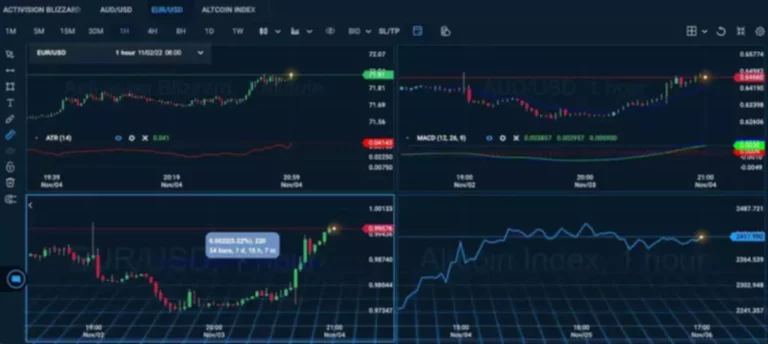Content
If your coins make up 0.001% of the total amount that has been staked, then your likelihood of being chosen as a validator would be about 0.001%. Understanding proof of stake is important for those investing in cryptocurrency. Here’s a guide to how it works, its pros and cons, and examples Proof of personhood of cryptocurrencies that use it. It uses PoW for transaction validation, which is why Bitcoin mining consumes a significant amount of energy.
Q. Why is proof of stake seen as an upgrade from proof of work?

Validators vote for pairs of checkpoints that it considers to be valid. If a pair of checkpoints attracts votes representing at least two-thirds of the total staked ETH, the checkpoints are upgraded. The earlier of the two is already justified because it was the “target” in the https://www.xcritical.com/ previous epoch. Polkadot is the latest entrant in the blockchain space, seeking to grow the ecosystem with additional solutions beyond networks like Ethereum and Cosmos.
What is the purpose of proof of stake?

With proof of stake, computers work together to decide which node (computer) validates the next block. Network members with a certain stake in what is proof of stake the cryptocurrency are randomly chosen to create new blocks and validate new transactions. Consensus mechanisms are an integral part of blockchain networks, ensuring decentralisation of the parties in charge of validating transactions. To achieve a blockchain’s paradigm characteristics of being immutable, trustless, and distributed, a reliable consensus mechanism is required.
Top Blockchains That Use Proof-of-Stake (PoS)
When a validator is down, they cannot participate in the consensus process. Since this is detrimental to the overall functioning of the network, it is penalized by the network via slashing. The term “downtime” refers to the period of time during which a validator is offline and unable to produce new blocks. This can be due to network delays, software issues, or hardware problems.
- This is what facilitated a stark drop in energy consumption, as there is no need for validators to own expensive and energy-consuming mining rigs.
- Put simply, Bitcoin on its proof-of-work consensus was too slow and inefficient for blockchain apps and games.
- To host a full validator node on Ethereum, a user needs to stake 32 ETH, which is very expensive.
- Validators vote for pairs of checkpoints that it considers to be valid.
- Due to the immutable nature of most blockchains, this means that the data entered is largely irreversible.
- Controlling 51% of all staked coins on the network is so difficult that it makes such an attack extremely unlikely.
Consensus is what addresses the “double spending” problem of digital money. If there were any way the user of a cryptocurrency could spend their coins more than once, it would undermine the entire system. While PoS is still emerging as a consensus mechanism for blockchain, it holds significant potential. When new data is added to the network, the majority of nodes must verify and confirm the legitimacy of the new data based on permissions or economic incentives; these are also called consensus mechanisms. When a consensus is reached, a new block is created and attached to the chain.
While proof-of-work offered the first-ever public blockchain consensus mechanism, it didn’t exactly fit the purposes some crypto enthusiasts were finding for it. Put simply, Bitcoin on its proof-of-work consensus was too slow and inefficient for blockchain apps and games. The information provided by Forbes Advisor is general in nature and for educational purposes only.
This stake acts as collateral, ensuring the validator behaves honestly. To explain, crypto slashing is a proof-of-stake blockchain’s form of punishment for acting maliciously or producing fake blocks. A blockchain is a type of distributed database or ledger—one of today’s top tech trends—which means the power to update it is distributed between the nodes of a public or private computer network. The network provides incentives for nodes to make updates to blockchains in the form of digital tokens or currency. Both consensus mechanisms help blockchains synchronize data, validate information, and process transactions.
Since then, he has assisted over 100 companies in a variety of domains, including e-commerce, blockchain, cybersecurity, online marketing, and a lot more. In his free time, he likes playing games on his Xbox and scrolling through Quora. Finality is the time it takes to protect a transaction on the blockchain. Finality guarantees that a particular block in the blockchain cannot be changed or reversed.
It fosters a secure and decentralized network, encouraging higher participation and paving the way for a scalable blockchain ecosystem. As more miners begin to run nodes on a blockchain, the hash rate (i.e. computing power of the network) increases, meaning the next block may be mined into existence a little faster than the previous. The network attempts to maintain a consistent block time (the time between each block); Ethereum is mined every ~14 seconds and Bitcoin is mined every ~10 minutes. The difficulty regularly adjusts after every block so the block times stay relatively stable. At the time of writing, staked ETH and staking rewards are yet to be unlocked. Moreover, we are yet to see the implementation of some major new scalability options, such as sharding.

Pioneered by Satoshi Nakamoto with the release of Bitcoin in 2008, PoW has so far powered the majority of highest-profile blockchains, including Ethereum. Since there is no competition in proof of stake, less computational resources are used, bringing down energy usage. The bitcoin network has often been criticized for its massive energy consumption, while other cryptocurrencies tout themselves as more energy-efficient thanks to PoS. The biggest downside of proof of stake happens if someone or a group accumulates more than 50% of a currency.
You are free to move your tokens anytime, as there are no freezing periods when delegating to a validator. Choosing your validator carefully is enough to easily ensure quality of service and rewards. The only mentionable content to the Proof of Work consensus was proof-of-stake. In short, it aimed to mirror all the decentralization of the Bitcoin network without massively impeding its security, and many today would say it achieved that feat.
Get a sense of what it’s trying to achieve and whether any other products on the market might be able to do it better. Some crypto exchanges offer programs through which they’ll stake crypto for you. This can be a simple option for beginners, but there are some tradeoffs. If you’re selecting a validator, it’s a good idea to research their historical performance and reliability.
Your coins are locked up while you stake them, but you can unstake them if you want to trade them. This method is an alternative to proof of work, the first consensus mechanism developed for cryptocurrencies. Since proof of stake is much more energy-efficient, it has gotten more popular as attention has turned to how crypto mining affects the planet.